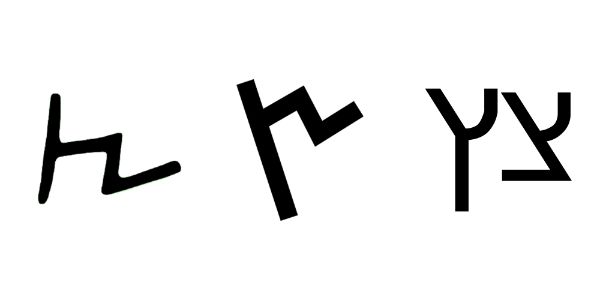« Back to Glossary Index
Synonyms:
𐤑, ṣ
The letter tsad (𐤑) or Ts/ts (Ṣ/ṣ) is the eighteenth letter in the Afroasiatic language known as Paleo-Hebrew (Ābarayat). The letter has been equated with the letter Ts in the English language. Nonetheless, it’s a combination of two letters in order to create the sound that was produced by the original Paleo-Hebrew letter.
Extended Study for 𐤑 (ts)
To read the study guide entry that elaborates on 𐤑 (ts) then join our Extended Study Membership at https://www.paleohebrewdictionary.org/extended or use phdict.org/extended to share a short link with others.





